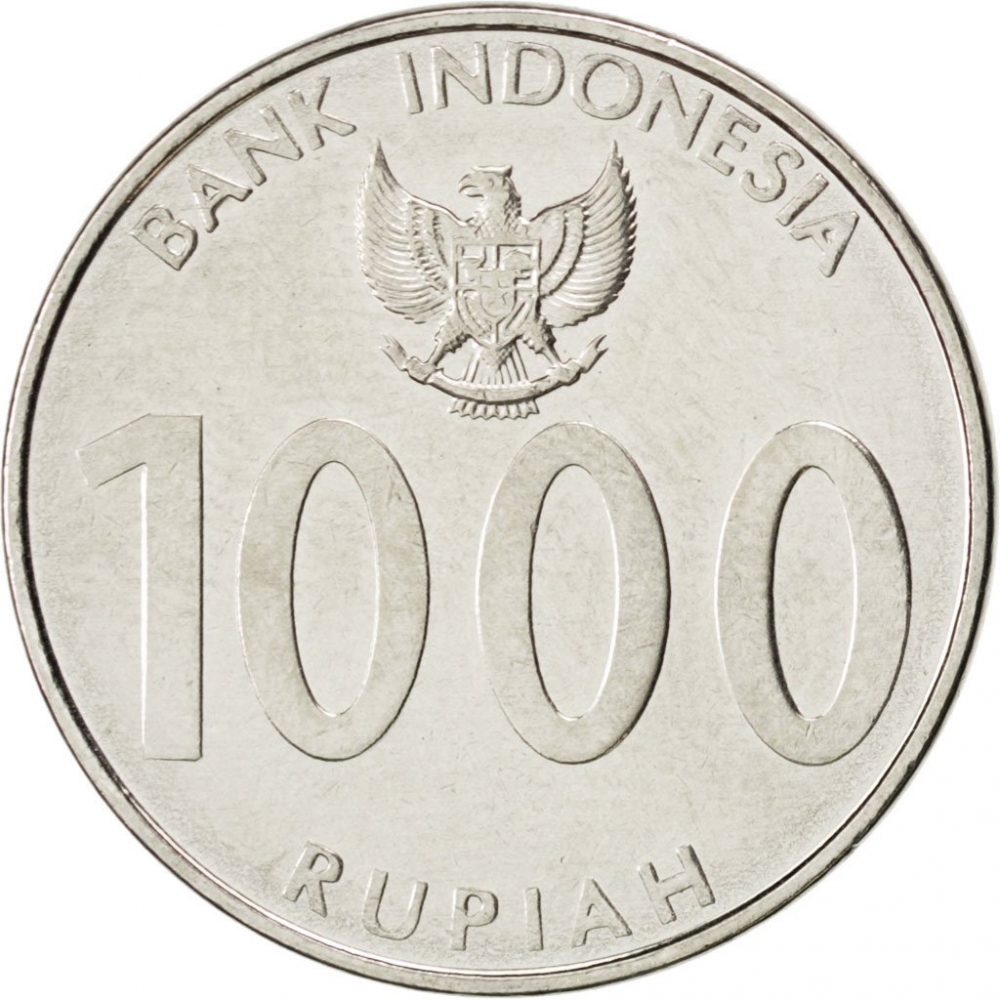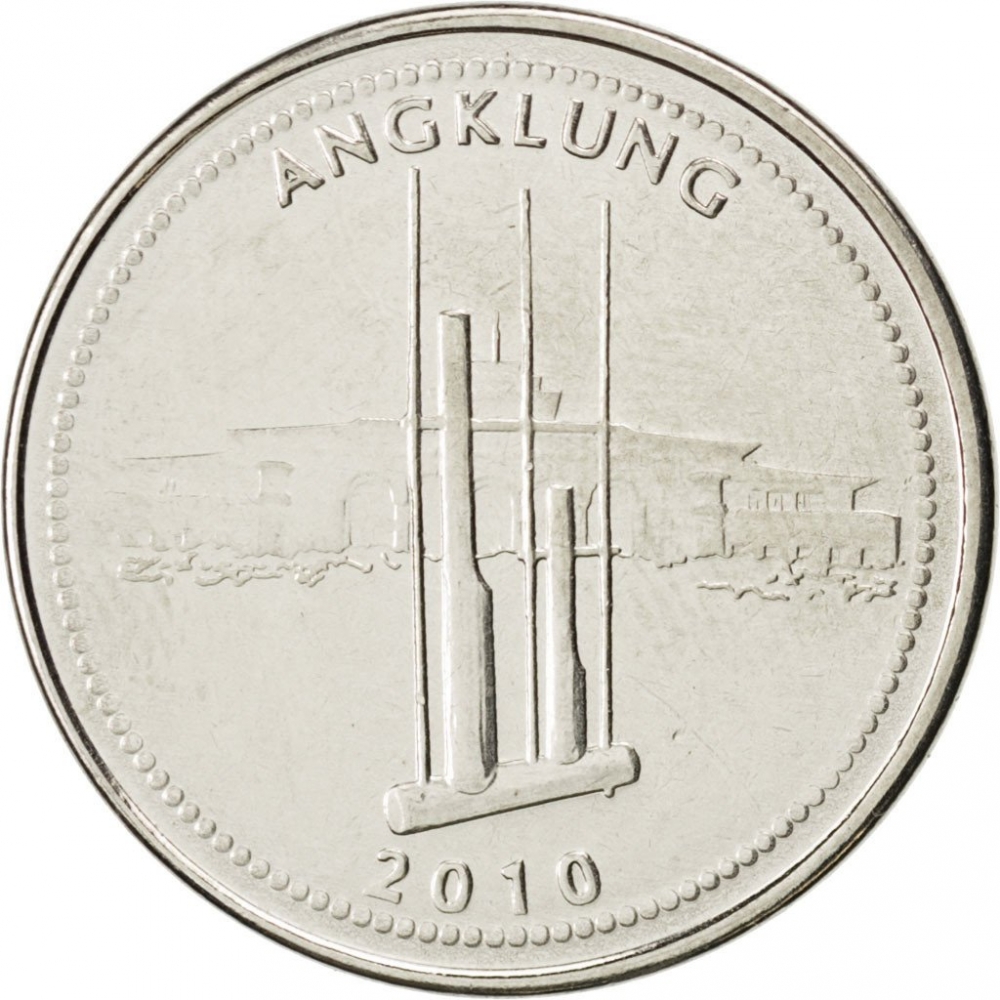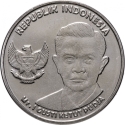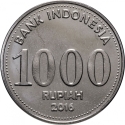You are about to finish your registration. Please check your mailbox (including spam folder). There should be a letter with a confirmation link. Check setting to make sure that your e-mail address is correct.
Send letter again
Obverse

|
Depicts the national emblem of Indonesia above value. BANK INDONESIA |
|---|---|
Reverse

|
Depicts the Angklung, Gedung Sate behind, date below. ANGKLUNG |
| Edge |
1000 Rupiah
KM# 70 Schön# A53
Characteristics
| Material | Nickel Plated Steel |
| Weight | 4.5 g |
| Diameter | 24.15 mm |
| Thickness | 1.6 mm |
| Shape |
|
| Alignment | Medal |
| Mint |
Perum Peruri
|





